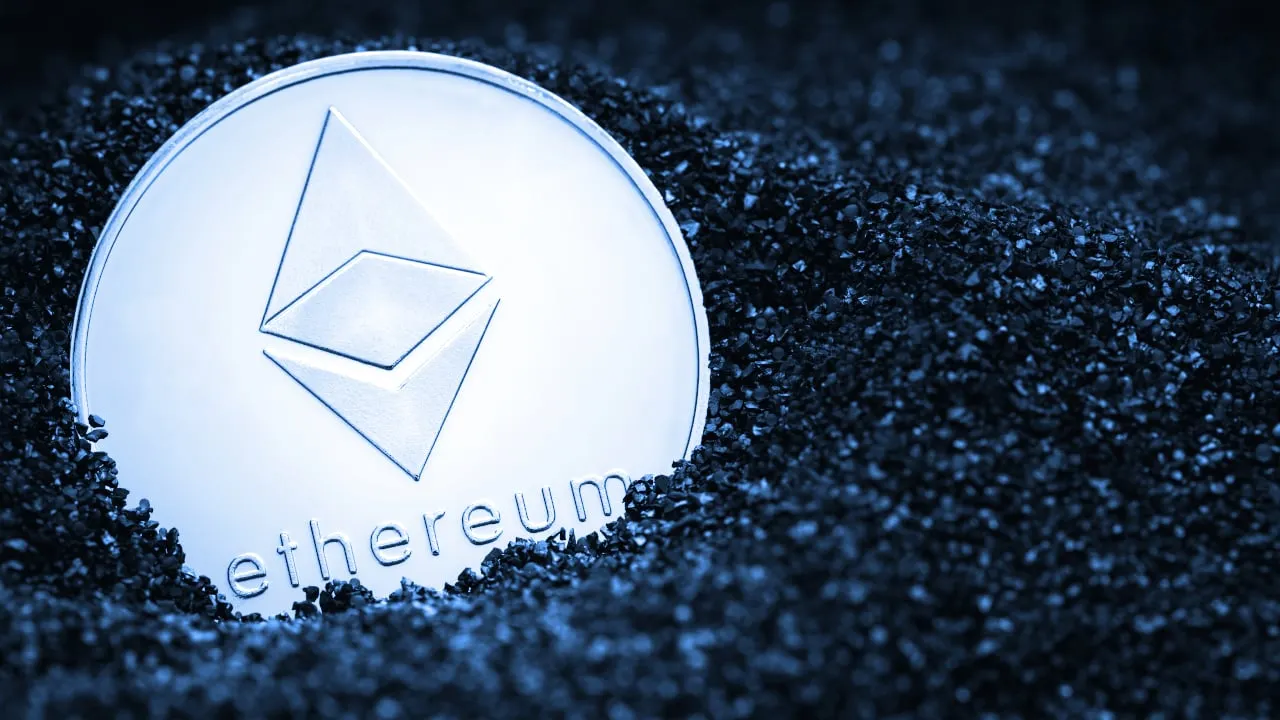As Russia’s invasion of Ukraine continues to upend the lives of millions, many Ukrainians have turned to a reliable source of income that’s relatively passive and requires little maintenance: Ethereum mining.
For years, the Ethereum network has depended on thousands of individuals like these Ukrainians to generate ETH, the blockchain’s native cryptocurrency, via an energy-intensive process called “mining.” Individuals, or “miners,” direct computer power to race to solve complex puzzles; the winners of these races receive what’s known as block rewards in the form of valuable ETH.
“Because of the war, we started providing zero mining fees to all Ukrainian miners,” said Da Liang, head of finance and business development at f2pool, a leading service that allows individual Ethereum miners to pool their computing power and split the profits. “We saw, there are so many actual, individual miners in Ukraine… liv[ing] in villages, running several GPUs to support their whole family.”
But those Ukrainians, and thousands of others, will likely soon have to find another way to pay the bills. “The Merge,” a long-anticipated update to the Ethereum network, will end the practice of Ethereum mining. After numerous delays, the Merge, previously referred to as “Ethereum 2.0,” appears likely to take place by the end of the year.
With that date fast approaching, a once-dreaded hypothetical for most miners is now unavoidable: what will those who make their living mining Ethereum do? Where will they go?
Mining pools, and the miners who made them
It depends who you ask.
As the Merge approaches, a divide is surfacing in the Ethereum mining community between the companies that have helped coordinate the resources of individual miners (mining pools) and individual miners themselves.
That’s to do with the system that will soon replace Ethereum mining. Whereas miners can currently create new ETH by pledging huge swathes of computing power (in a process called proof of work), after the Merge, network participants known as validators will be required to instead pledge large amounts of pre-existing ETH to validate blocks, create more ETH, and earn staking rewards. This process, known as proof of stake, will be a 99% more environmentally-friendly method of generating new Ethereum, according to the Ethereum Foundation. It will also decrease the issuance of new ETH, and issue rewards in smaller blocks.
For mining pools, the transition is not that huge of a jump. Pooling companies never did the work of generating computer power themselves, and so they never sunk money into soon-to-be-obsolete mining hardware. What these companies do possess, however, is human capital: the infrastructure necessary to coordinate the pooling of resources, source new clients, and keep thousands of existing clients happy.
For this reason, leading Ethereum mining pools are already well on their way to transitioning to staking pools: organizations that coordinate and combine the ETH of many individual “stakers” to create more.
“[The transition from mining to staking] requires business development, customer service, communicating with core devs, client teams, software, redundancy,” said Daniel Hwang, head of protocols at Stakefish, a leading staking pool. Stakefish is the sister company of f2pool, the second-largest mining pool; the two companies have long been planning for the transition from Ethereum mining to staking, and sharing and coordinating human resources to do so. Hwang currently holds positions at both companies.
The largest Ethereum mining pool, EtherMine, is also transitioning to staking: the company just launched a beta version of EtherMine Staking, a staking pool service.
Together, Ethermine and f2pool account for almost half of all hash power, or computing power, currently being directed to mine Ethereum.
Companies like EtherMine and f2pool operate on a fee structure, charging individuals for participating in their pools. That business model will be unaffected by the move from mining to staking.
But for the miners who comprise these pools, and other independent Ethereum miners, the transition looks very different.
Individuals who have profited from mining Ethereum—either by sending moderate amounts of specialized computer power to mining pools, or by overseeing massive farms of mining hardware independently—now find themselves in possession of a resource they don’t need (very expensive mining hardware, useless for staking), and lacking a resource they don’t have (human capital).
Proof of stake requires a minimum contribution of 32 ETH to start seeing even the smallest of returns in the form of staking rewards, which replace the mining rewards of old. To make a noteworthy profit, a validator would have to control and pledge much more ETH than that, an amount far exceeding the savings of most individuals. Essentially, for staking to begin to adequately fill the void of lost mining revenue, it would require independent miners to create and maintain their own staking pools, a feat much more intricate than maintaining a stack of computers.
“It's no longer plugging in a machine and making money,” said Hwang. “Now you have to provide all these other services. It’s like a business now.”
No good option
If individual miners are incapable of, or unwilling to, create their own staking pool businesses, they have a few other options. They could sell their mining equipment, and participate in a larger company’s staking pool.
Or they could keep their hardware—so long as it consisted of more generalized graphics processing units (GPUs) and not specialized, now certainly-useless application-specific integrated circuits (ASICs)—and use it to mine one of the select other types of cryptocurrencies compatible with their processors.
Neither situation is ideal—or close to it.
Contributing fractional amounts of ETH to a larger staking pool is likely to generate a much lower rate of return for individuals than mining has up to now. “The slope of the curves of the economics are significantly different,” said Ethereum core developer Danno Ferrin.
And as for the other compatible cryptocurrencies that miners could potentially mint with existing hardware, such as Ethereum Classic, Ravencoin, and Ergo, these coins, much less in demand than Ethereum, offer substantially lower profit margins.
“It will be impossible for them to recover the costs of their equipment,” said f2pool’s Da Liang of Ethereum miners who have purchased costly mining hardware within the last two years. Mining GPU-compatible altcoins post-Merge will likely fail to cover that deficit.
“I don't know how anyone who has rational business sense is going to be like, ‘Oh, yeah, I have millions of dollars of equipment, I'm gonna now just switch to Ravencoin, and we're gonna be fine now,’” said a source at a prominent mining pool who wished to remain anonymous.
Carried along, or left behind?
As mining pools make the relatively seamless transition to staking, what will become of the individual miners who got them to this point?
“I don't think there's too much overlapping of clients,” said Da Liang, referring to the lack of crossover he’s observed between new staking pool participants and miners.
Ethereum core developer Micah Zoltu put it more bluntly: “The hope is that the demographic of validators is quite different from miners.”
Zoltu sees the lack of hardware required to participate in a staking pool less as an issue for those who’ve already purchased hardware and more as an opportunity for those who haven’t: “Validating can be done on a home PC. You don’t need particularly specialized hardware.”
EtherMine, however, is optimistic that it can bring its current miners into the fold, and keep them along for the ride. Butta, the pseudonymous CMO of Bitfly, EtherMine’s parent company, said their goal is to “onboard our current miners from proof of work to proof of stake.” Butta noted that most deposits to EtherMine’s new staking platform have come from existing miners.
Whatever choice an individual Ethereum miner makes, be it to keep mining or start staking, there’s no easy answer as to how they will ever again come close to generating the revenue produced by mining Ethereum.
“The Merge is coming, the bear market is coming. I don't think they have too many choices,” said Da Liang. “They will just continue to mine Ether until the Merge.”
And after that? There is no easy answer.

